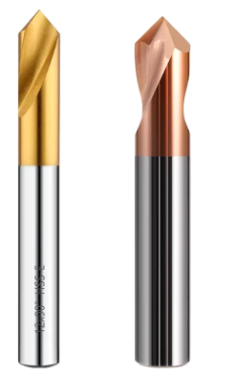Center drills were always used for this purpose until the advent of the internet when we found out we'd been doing it wrong all along.

That made me chuckle but its not entirely fair, really.
 @tominboise
@tominboise
Spotting drills create a spot with a cone that has a steeper angle than a 118° drill, meaning that when the 118° drill encounters the spot, the cutting edges will hit the circumference of the spot before the tip of the dril hits the bottom of the spot. That's supposed to lead to less wander and more accurate drilling. Spotting drills are used a lot in CNC drilling.
I guess whether or not you need a spotting drill depends on the requirements of accuracy of the holes you're drilling. If you're drilling 80 holes, I hope for the sake of your sanity, you don't need them to micron accuracy.

Centre drills, strictly speaking, are designed for just what their name suggests, making the hole for a lathe's centre to go. That said, it'd be silly to shame someone for using a centre drill to spot on a mill or drill press; for most purposes a centre drill is fine. I do have spotting drills, which I now use in favour of centre drills on the drill press, but I did use centre drills before I got the spotting drills and that seemed fine; I guess I just like buying drills.


Stub drills (AKA screw machine drills) are brilliant things to have so you should buy them anyway, but what others have said about skipping the spotting step and using a 1/4" stub drill to pilot the holes is a great idea, given how many holes you're drilling.




